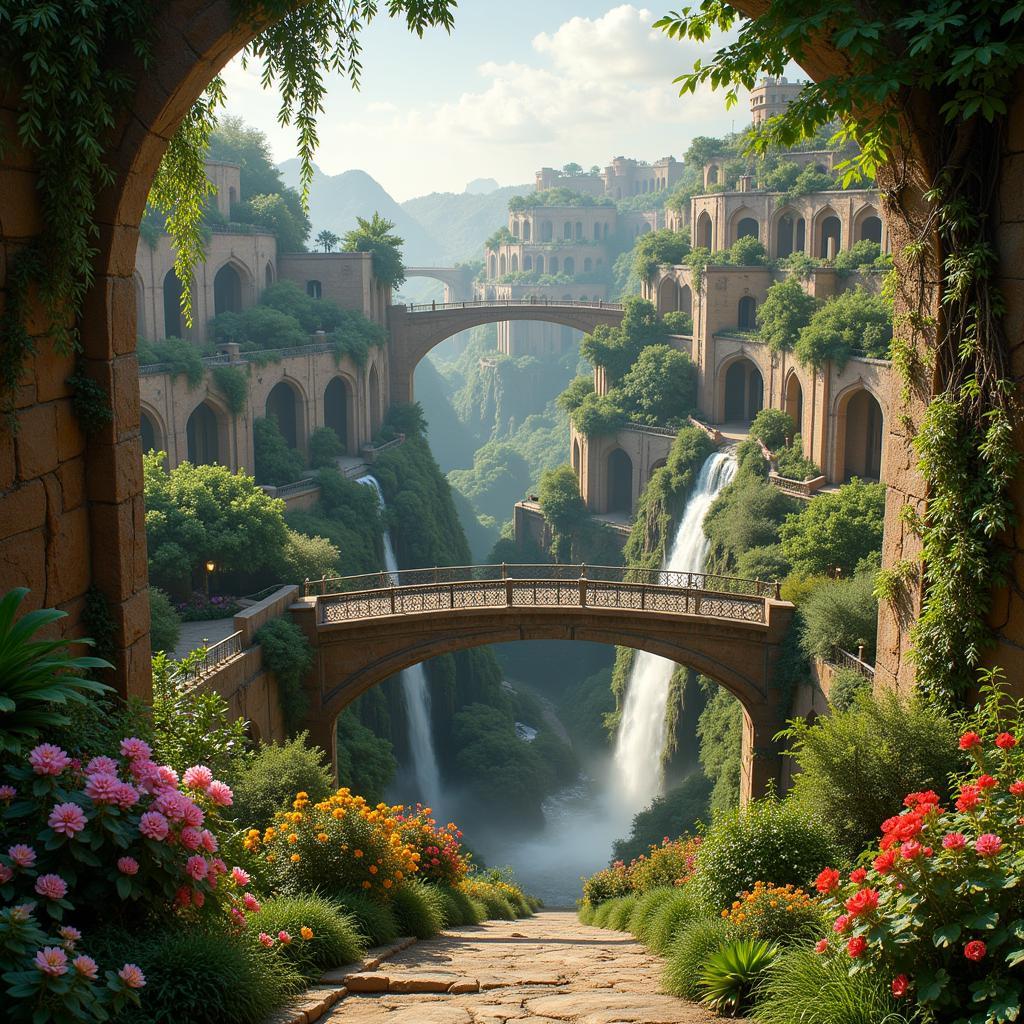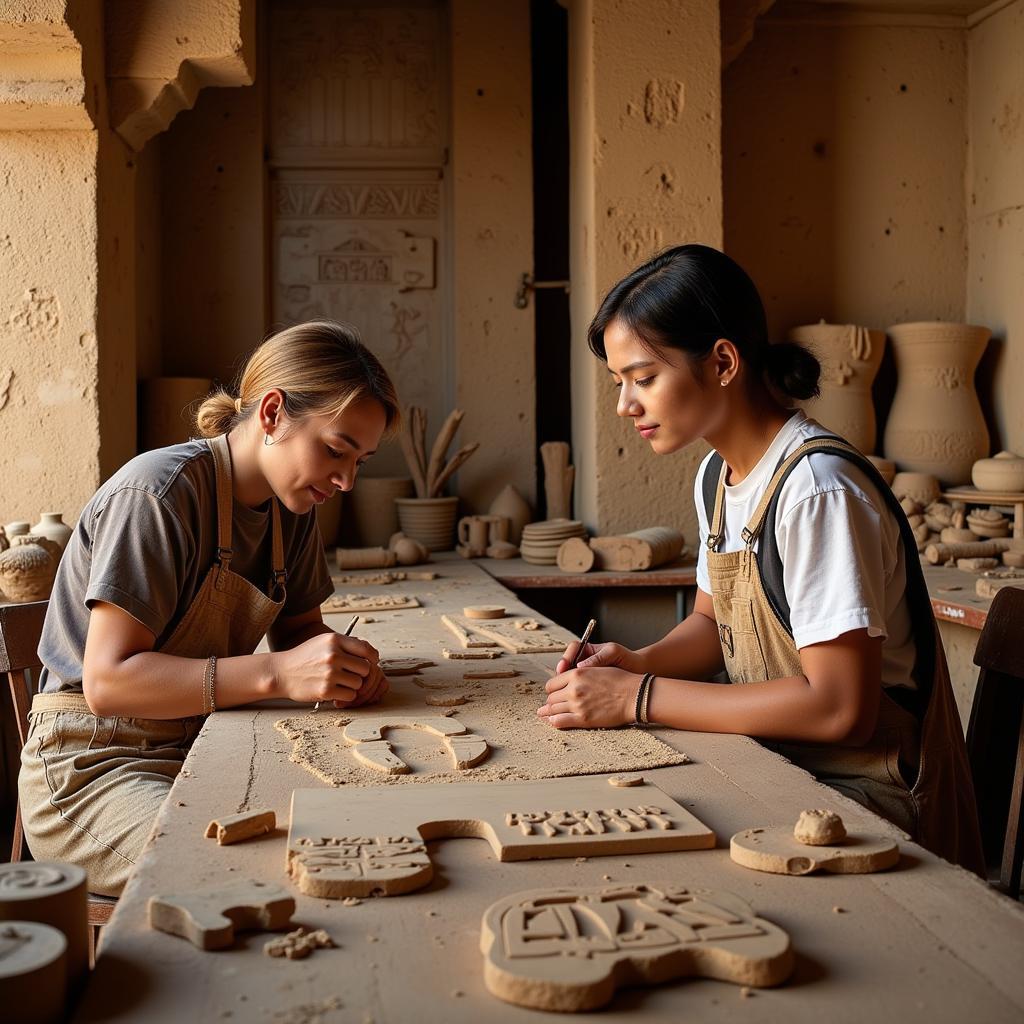The Babylon Beautification Society, a term often uttered with curiosity and intrigue, represents more than just a historical footnote. It’s a concept that invites us to delve into the intricate relationship between aesthetics, power, and societal values, particularly within the context of ancient civilizations. While the term itself might not be rooted in a specific historical entity called the “Babylon Beautification Society,” exploring its hypothetical existence allows us to uncover fascinating truths about how societies throughout history, including Babylon, have sought to define and express beauty.
The Power of Aesthetics in Ancient Babylon
Imagine strolling through the bustling streets of ancient Babylon. Towering ziggurats pierce the sky, intricate carvings adorn majestic palaces, and vibrant gardens offer a sensory escape. Beauty, in its many forms, permeated Babylonian life. But what drove this fascination with aesthetics?
 Lush Hanging Gardens of Babylon
Lush Hanging Gardens of Babylon
For the Babylonians, beauty wasn’t merely superficial. It held profound cultural, religious, and political significance. Magnificent structures like the Ishtar Gate, with its glazed brick reliefs depicting powerful lions and mythical creatures, served as potent symbols of Babylonian might and prosperity. These grand displays of artistry weren’t just about pleasing the eye; they were strategic projections of power and influence.
Deciphering “Babylon Beautification Society”: A Hypothetical Exploration
While historical records don’t point to a formal organization called the “Babylon Beautification Society,” envisioning such a group allows us to understand how the pursuit of beauty might have been organized and implemented in ancient Babylon.
This hypothetical society could be comprised of skilled artisans, architects, gardeners, and patrons of the arts, all working together to enhance the city’s aesthetic appeal. Their efforts might have included:
- Commissioning grand architectural projects: Think ziggurats reaching for the heavens, intricately designed temples, and sprawling palaces adorned with intricate carvings.
- Cultivating verdant gardens: Imagine lush gardens offering shade from the scorching sun, filled with exotic plants and the soothing sounds of water features.
- Promoting artistic excellence: Envision workshops where skilled craftsmen hone their skills in pottery, sculpture, and textile weaving, contributing to Babylon’s reputation for artistic innovation.
 Ancient Babylonian Artisans at Work
Ancient Babylonian Artisans at Work
The Legacy of Babylon: Beauty that Transcends Time
Though millennia have passed since Babylon’s height, the legacy of its aesthetic achievements continues to captivate. The city’s dedication to beauty, as reflected in its architecture, gardens, and art, reminds us of the enduring power of aesthetics to shape our world and inspire awe.
The concept of a “Babylon Beautification Society,” though hypothetical, offers a valuable lens through which to appreciate the intricate ways that societies throughout history have sought to define and express beauty, leaving behind a legacy that continues to resonate today.
Frequently Asked Questions about the Babylon Beautification Society
-
Did the Babylon Beautification Society actually exist? While there’s no historical evidence of a formal organization by that name, exploring the concept helps us understand how beauty was valued and pursued in ancient Babylon.
-
What were some of the key aesthetic principles in Babylonian art and architecture? Babylonian aesthetics often emphasized grandeur, symmetry, and the use of intricate detail to convey power and religious significance.
-
How did Babylonian gardens contribute to the city’s beauty? Gardens served as oases of tranquility and beauty, showcasing the empire’s botanical wealth and offering a respite from the bustling city.
-
How does the legacy of Babylonian aesthetics continue to influence us today? From the grandeur of our buildings to the intricate designs we incorporate into everyday objects, echoes of Babylonian aesthetics can be seen in our own pursuit of beauty and artistic expression.
Discover More
Explore more about ancient civilizations and the power of art and architecture:
- The Art and Architecture of Mesopotamia
- The Hanging Gardens of Babylon: Fact or Myth?
- The Influence of Ancient Civilizations on Modern Art
Need Help? Contact us!
Phone Number: 02043854663
Email: [email protected]
Address: Khu 34, Bac Giang, 260000, Vietnam.
Our dedicated team is available 24/7 to assist you.